Bharati Vidyapeeth Deemed University in Pune is growing both in size and aspiration. Located in the Cultural and Educational Capital of Maharashtra, the University has an ambitious plan to take its education brand to the next level. Talati and Partners are developing a 70 acres master plan to guide and deliver the university’s growth plans, considering its academic, social, and sustainability goals.
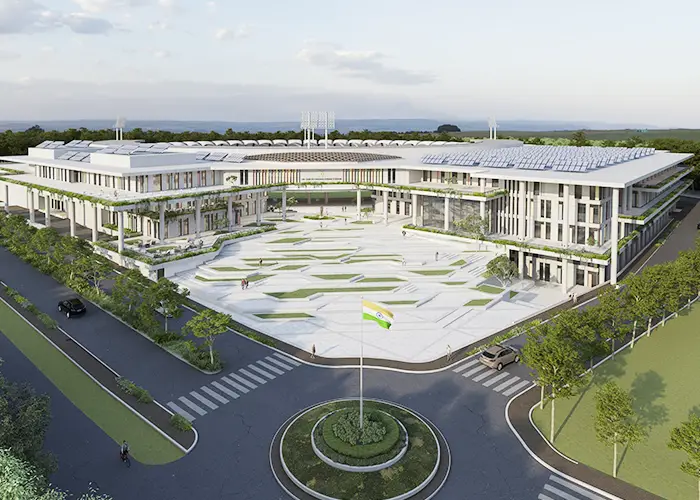
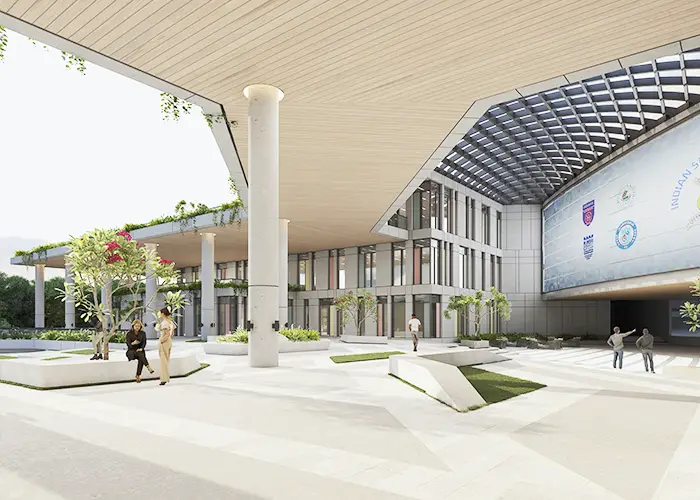
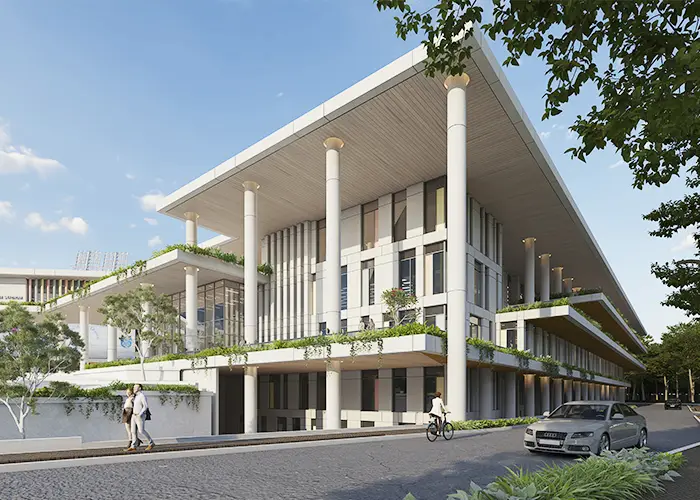
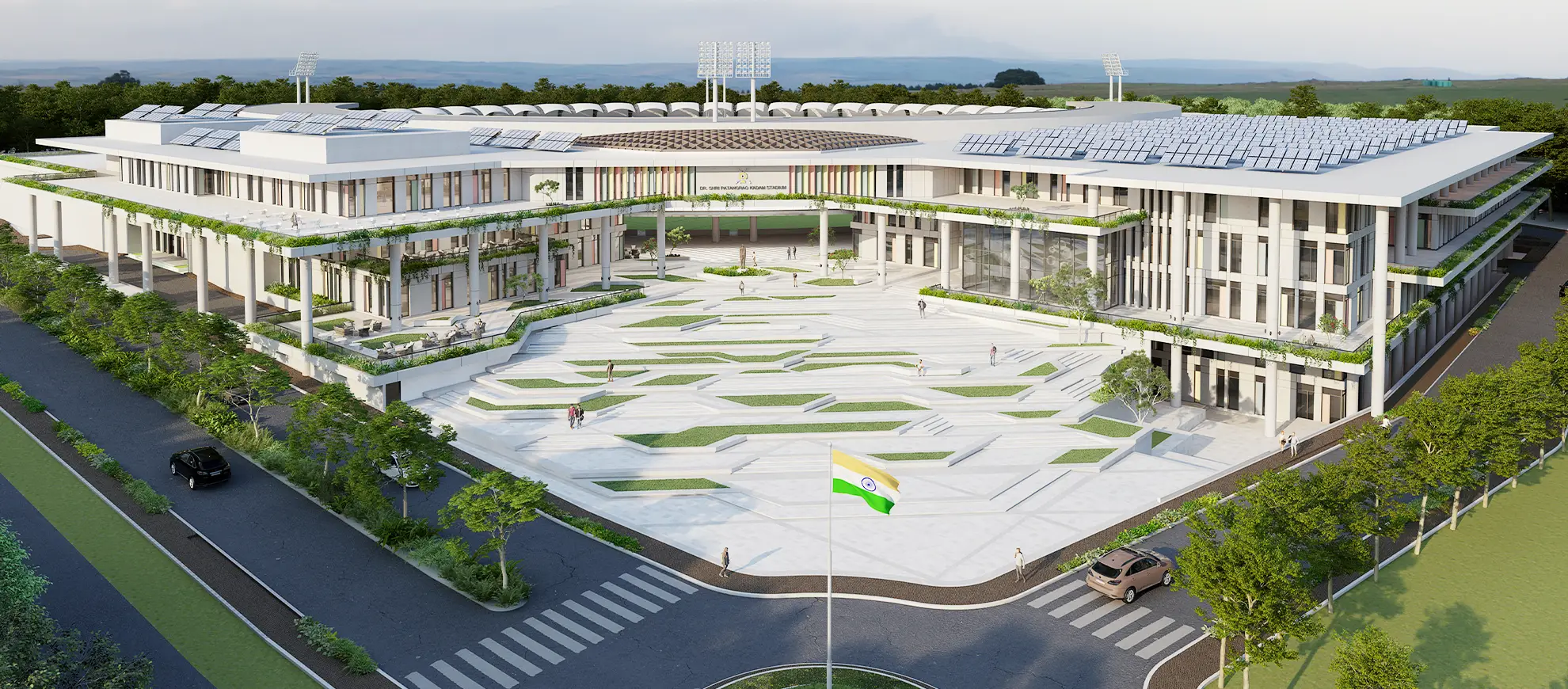
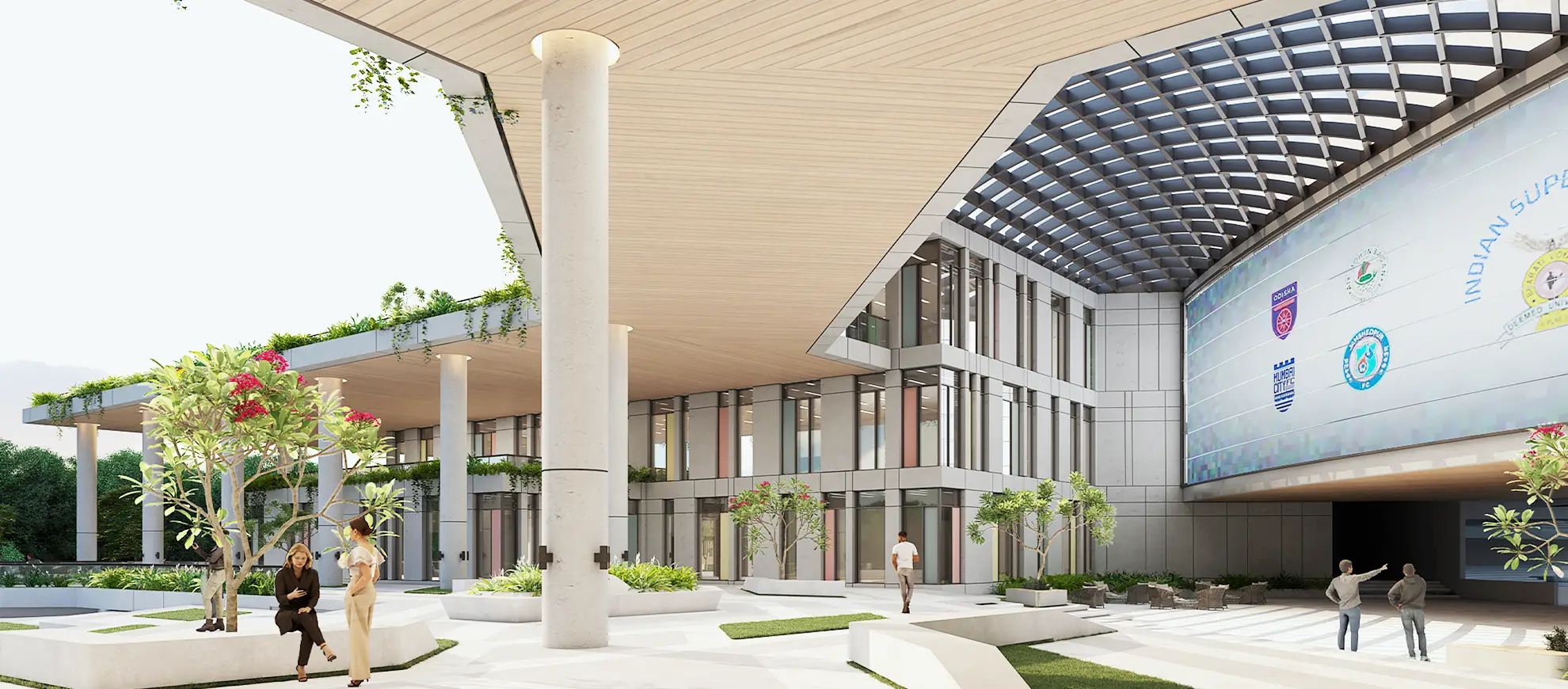
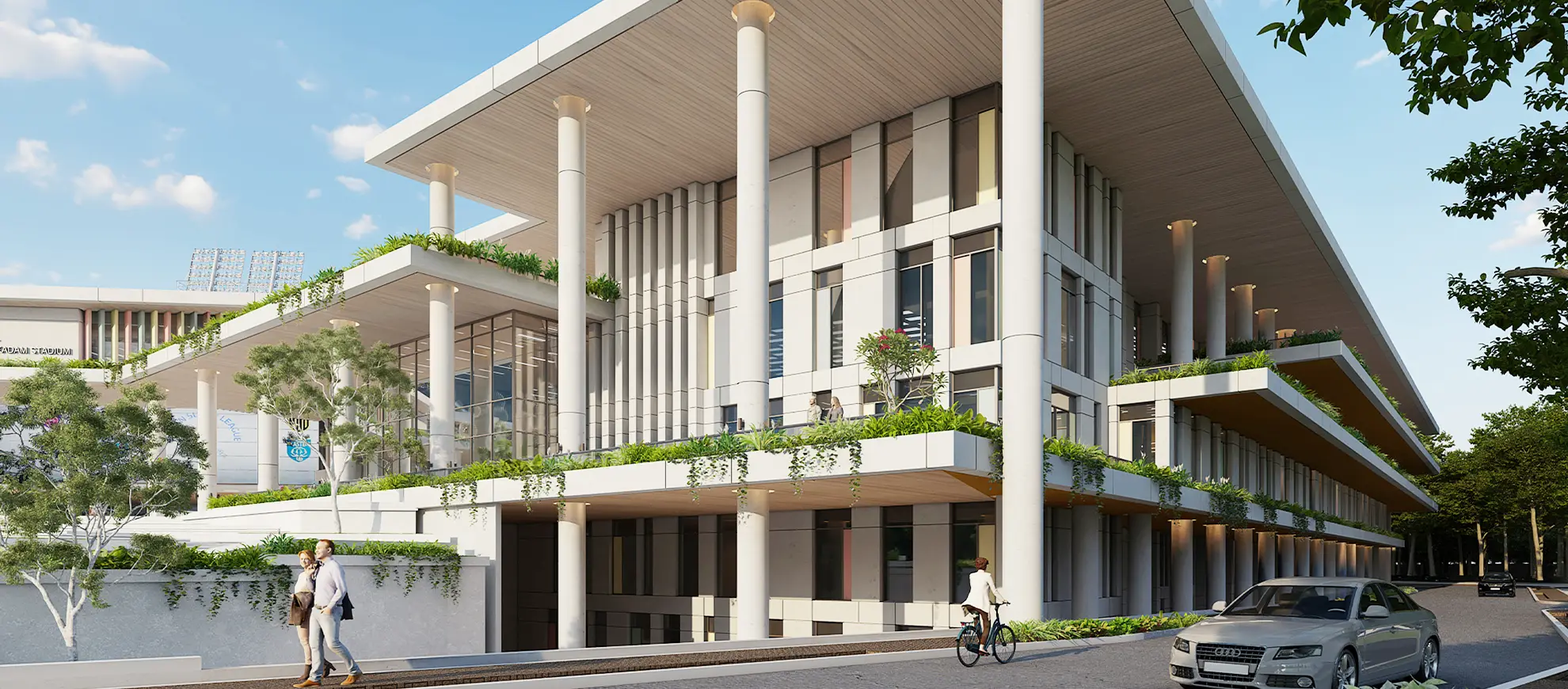
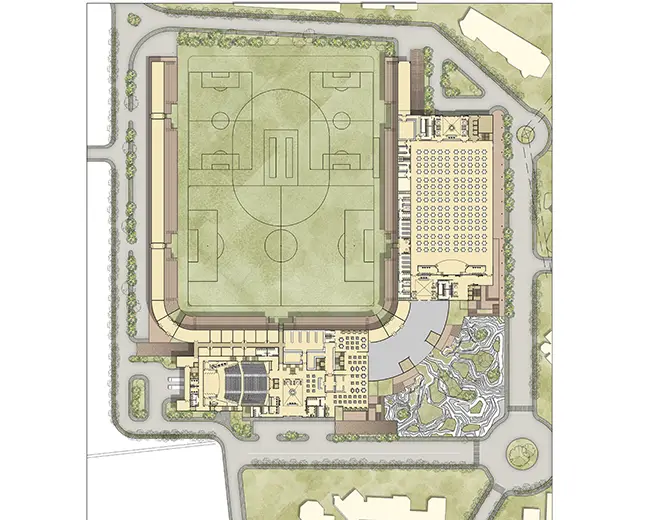
Preserving the fabric and tradition of a great institution’s campus while modernizing it to move forward into future generations is a high-wire experience. For each of us involved in planning and designing these campuses, every decision, however minor, carries a larger meaning and consequence.The master plan segments into three regions— healthcare, educational and recreational. It has a central spine flanked by building masses on either side.
The architects at TPA have chosen a vehicle free pedestrian centric approach for the Masterplan. They have chosen to shift the focus from the built forms, which is typical of a master plan design, and instead emphasize the spaces which connect them. They believe that an attractive, pedestrian-friendly campus can also serve as a powerful recruitment tool, a place that can make a great first impression on students. It includes a hierarchy of roads with avenues, boulevards, lanes for cycles and E-vehicles, and tree-lined walkways along with plazas and congregation spaces for students, interspersed at regular intervals, to weave the buildings together.
Preserving the fabric and tradition of a great institution’s campus while modernizing it to move forward into future generations is a high-wire experience. For each of us involved in planning and designing these campuses, every decision, however minor, carries a larger meaning and consequence.The master plan segments into three regions— healthcare, educational and recreational. It has a central spine flanked by building masses on either side.
The architects at TPA have chosen a vehicle free pedestrian centric approach for the Masterplan. They have chosen to shift the focus from the built forms, which is typical of a master plan design, and instead emphasize the spaces which connect them. They believe that an attractive, pedestrian-friendly campus can also serve as a powerful recruitment tool, a place that can make a great first impression on students. It includes a hierarchy of roads with avenues, boulevards, lanes for cycles and E-vehicles, and tree-lined walkways along with plazas and congregation spaces for students, interspersed at regular intervals, to weave the buildings together.
The existing building designs had a huge variation in the architectural language. Rather than adding another language to it, the design takes a neutral route to create a holistic design.
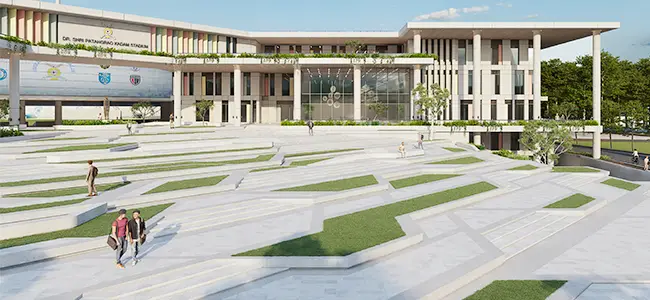
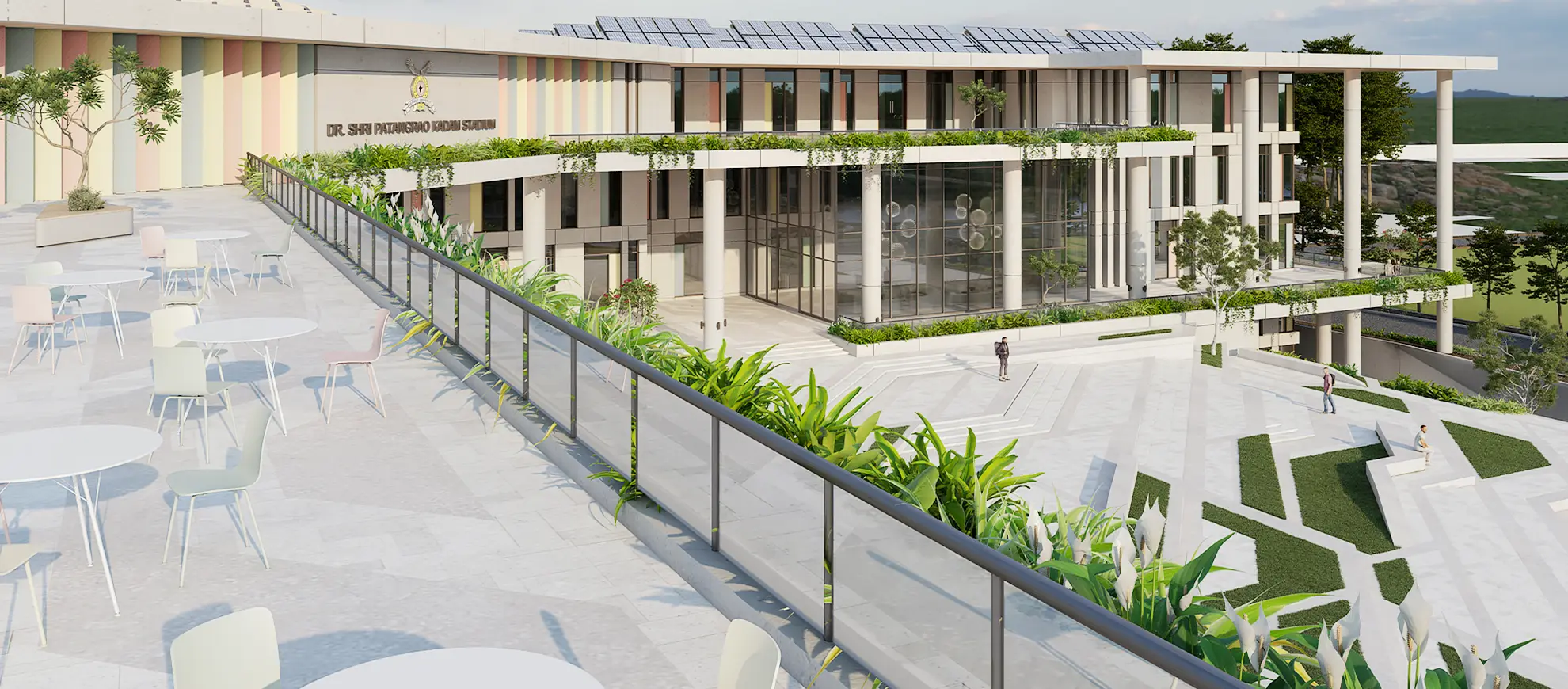
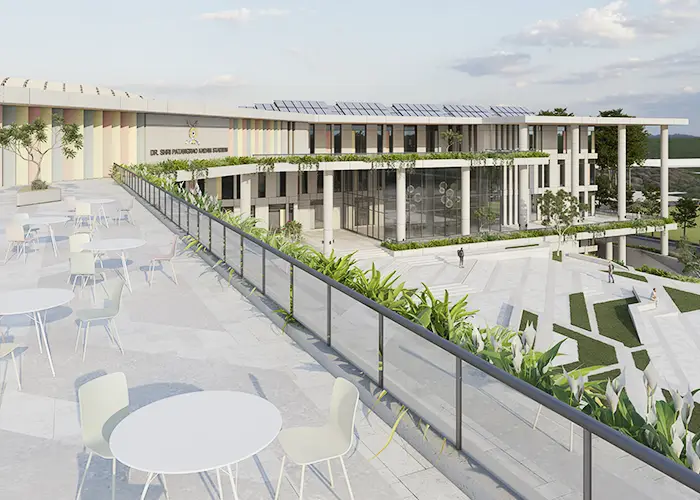
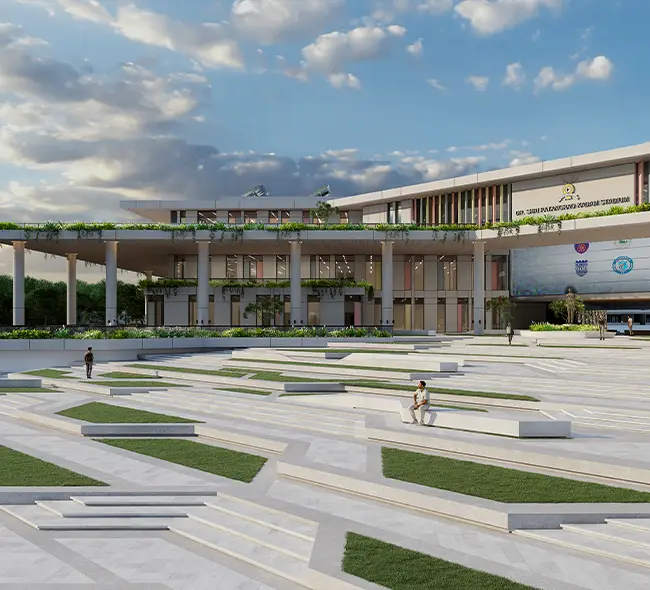
Besides, TPA have led the design of the new landmark structures for sports, culture and congregational activities which are envisioned to become the new identity for the campus. The project’s main purpose is to breathe a new life to the existing university campus by bringing in an iconic and aspirational value.
TPA has envisioned an inclusive design, by placing all the facilities needed for students to linger. A hybridization of disciplines merges art, architecture, culture and sports within the central plaza. The plaza is designed not only as a gathering space but a multifunction area which can host events, art installations and other student centric activities. The two building blocks interconnect through the lower and upper plaza with a grand staircase. Where the lower plaza will include landscaped gardens, tree-lined pathways, and paved open walkways. This will be the core for student gatherings, live performances, art displays and everyday campus life. Meanwhile, the upper plaza will include viewing decks, shaded exterior spaces and landscape areas.
The Cultural Centre houses the auditorium block and the cafeteria which are placed to create a symbiotic relationship whereby each function complements the other and creates a seamless connectivity between the two. The cafeteria is designed to cater to approximately 600 pax which can be notionally segregated between students, staff and visitors. The kitchen will also cater to a VIP lounge at the upper level with both indoor spaces and outdoor decks overlooking the football field.
The heart of the project is the central plaza, flanked by a Convention Centre on one side and the Cultural Centre on the other. The proposal constitutes of a FIFA standard football field along with a cricket stadium and a spectator capacity of more than 6000, at the centre. The pandemic has changed the way individuals interact with public spaces, and at TPA we have observed and tried to inculcate this new relationship into the design of the main plaza. The design concept for the central plaza Is fragmented yet unified at the same time to allow for clustering of users with the use of smaller green pastures and levels used as seating. These levels help breakup an otherwise large swathe of land creating interesting spaces to interact with.
TPA has envisioned an inclusive design, by placing all the facilities needed for students to linger. A hybridization of disciplines merges art, architecture, culture and sports within the central plaza. The plaza is designed not only as a gathering space but a multifunction area which can host events, art installations and other student centric activities. The two building blocks interconnect through the lower and upper plaza with a grand staircase. Where the lower plaza will include landscaped gardens, tree-lined pathways, and paved open walkways. This will be the core for student gatherings, live performances, art displays and everyday campus life. Meanwhile, the upper plaza will include viewing decks, shaded exterior spaces and landscape areas.
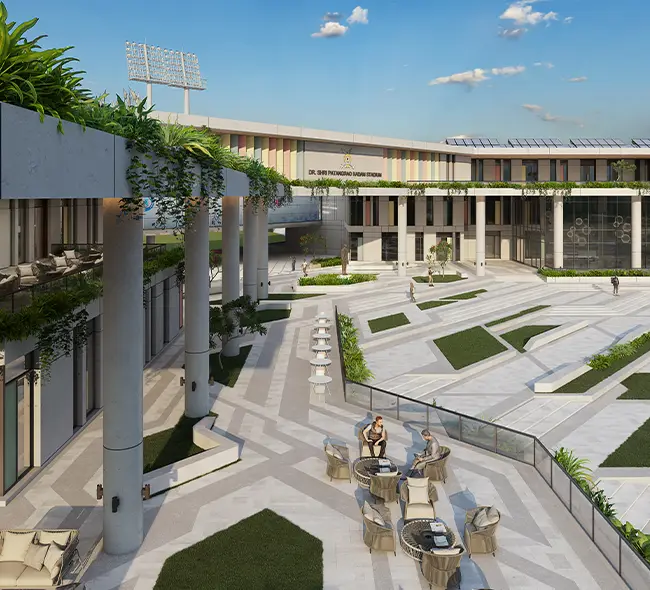
The attempt is to weave the building masses together to create a coherent design by using a neutral design language.
The hierarchy of roads with avenues, boulevards, lanes for cycles and E-vehicles, and tree-lined walkways weave the buildings together.
TPA collaborates with the premier Bharati Vidyapeeth University to create design-based solutions that address the pressing issues of today like mobility, urban revitalization, and sustainability.
© 2023, Talati & Partners LLP
